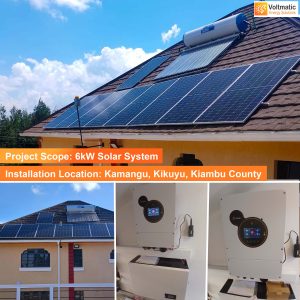Calculating Solar Power Needs

Transitioning to solar energy is a strategic move towards sustainability and cost savings. To ensure your solar power system meets your energy requirements efficiently, it’s crucial to perform a thorough assessment of your needs. This guide provides a detailed, step-by-step approach to calculating solar power needs, enabling you to make informed decisions.
1. Assessing Your Energy Consumption
Begin by evaluating your current energy usage. Review your electricity bills to determine your average monthly consumption, measured in kilowatt-hours (kWh). This data serves as the foundation for sizing your solar power system.
Example: If your monthly consumption is 900 kWh, your daily usage is calculated as:
Daily Usage= 900 kWh \30 days = 30kWh/day
2. Understanding Peak Sunlight Hours
The amount of sunlight your location receives directly influences the energy your solar panels can generate. This is quantified as Peak Sunlight Hours (PSH), representing the equivalent number of hours per day when solar irradiance averages 1,000 watts per square meter.
In Kenya, they typically ranges between 4 to 6 hours daily, depending on the region.
3. Calculating Required System Size
To determine the necessary size of your solar power system, use the following formula:
System Size (kW)=PSH (hours)Daily Energy Consumption (kWh)/PSH
Example: With a daily consumption of 30 kWh and an average of 5 PSH: System Size = 30 kWh/5 hours=6 kW
4. Accounting for System Losses
No solar system operates at 100% efficiency. Factors such as shading, dust, inverter inefficiency, and temperature variations can lead to energy losses, typically ranging from 14% to 22%.
To compensate, adjust your system size:
Example: Assuming a 20% loss: Adjusted System Size=6 kW/1−0.20 = 7.5 kW
5. Determining the Number of Solar Panels
The total number of panels required depends on the wattage of the individual panels. Solar panels typically range from 250 W to 650 W.
Number of Panels= Adjusted System Size (kW)×1,000/ Panel Wattage (W)
Example: Using 300 W panels: Number of Panels=7.5×1,000/300=25 panels
6. Evaluating Roof Space and Orientation
Ensure your roof can accommodate the calculated number of panels. Each panel occupies approximately 1.6 square meters. For 25 panels:
Total Area=25×1.6=40 square meters
7. Considering Future Energy Needs
Anticipate any changes in energy consumption, such as purchasing new appliances or an increase in household members. It’s prudent to factor in an additional capacity to accommodate future needs.
8. Consulting a Professional Installer
While this guide provides a foundational understanding, consulting with a professional solar installer is crucial. They can perform a detailed assessment, considering site-specific factors, and provide a tailored solution.
By meticulously evaluating your energy consumption, understanding local sunlight conditions, and accounting for system inefficiencies, you can accurately determine the optimal size for your solar power system. This comprehensive approach ensures that your investment in solar energy is both efficient and effective, paving the way for sustainable and cost-effective energy independence.
Reach us for more information via:
Phone Number: 0759493610
Email: info@voltmaticenergysolutions.co.ke